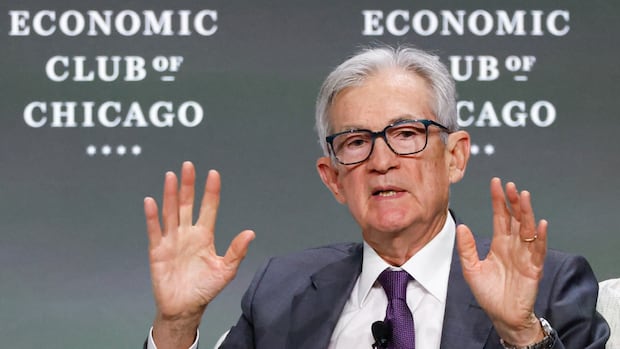U.S. President Donald Trump on Monday kept up his verbal attacks on Federal Reserve Chair Jerome Powell over the Fed’s refusal for now to further cut interest rates.
On social media, the president referenced Powell when he said a slowdown would be coming to the U.S. economy unless “Mr. Too Late, a major loser, lowers interest rates, now.”
This comes after Trump said Powell’s termination “cannot come fast enough” in another Truth Social post last week.
While the Federal Reserve — the U.S. government’s central bank — is an independent body, Trump has been pressuring it to lower interest rates.
Many economists say the rising attacks on Powell are increasing fear that Trump may ultimately try to fire the U.S. central bank chief. That fear contributed largely to the slump in financial markets yesterday, experts added.
The S&P 500 sank 2.4 per cent yesterday, the Dow Jones Industrial Average dropped 2.5 per cent and the Nasdaq fell 2.6 per cent to end another turbulent day on Wall Street.
U.S. President Donald Trump continued to criticize Federal Reserve Chairman Jerome Powell on Thursday, saying ‘Oh, he’ll leave … If I ask him to, he’ll be out of there’ as he welcomed Italian Prime Minister Giorgia Meloni to the Oval Office. Trump didn’t respond to a followup question about whether he would try to remove Powell.
A move by Trump to fire Powell would likely send a bolt of fear through financial markets. While Wall Street loves lower rates, largely because they boost stock prices, the bigger worry would be that a less independent Fed wouldn’t be as effective at keeping inflation under control. Experts worry that such a move could further weaken, if not kill, the United States’ reputation as the world’s safest place to keep cash.
Powell was first nominated by Trump in 2017 and then appointed for another term in 2021 under Biden’s administration. His term as chair doesn’t end for another year or so, in May 2026.
But how much power does the president actually have to get rid of Powell? Here’s what we know.
Can Trump fire Powell?
Whether Trump has the authority to do so is unclear.
The Federal Reserve Act of 1913 establishing the Fed stipulates that members of its Board of Governors, appointed by the president and confirmed by the Senate to staggered 14-year terms, can be only be removed for “cause” — long thought to mean misconduct, not policy disagreement.
That said, the law omits reference to limits on removal from its description of the four-year term of the Fed chair, who is one of the seven governors.
Has this happened before?
There is no direct legal precedent, since no president has ever tried to fire a Fed chief.
There are, however, lawsuits now working their way through the courts over unrelated firings by Trump. Those are being watched as possible proxies for whether he has that power.
One is currently…
Read More: Could Trump actually fire head of the U.S. central bank, Jerome Powell?




